Pictured Rocks National Lakeshore
Where we stayed: Au Sable East Campground
Good for: Backpacking, solitude, long hikes, backcountry camping, families willing to hike-in
Not great for: Car camping
Pros: Stunning scenery, Shipwreck Beach adjacent, lighthouse adjacent, very quiet, one lonely but clean vault toilet without any walls or roof to shelter it, plentiful fresh water but you have to filter it out of Lake Superior
Cons: Group campfires rather than individual ones, that weird vault toilet
Website
Reservations
Day 3
We woke up around 9 a.m. at Sevenmile Creek and it was immediately apparent we would not have the kind of bright, sunny weather we had seen the day before. That’s fine, we knew what we were getting into when we agreed to this. Today was the big day, it was going to be an 8 mile hike from Sevenmile Creek to the Au Sable East campground. I know 8 miles isn’t that long in the world most serious backpackers occupy (you know the ones, they always seem to be in the middle of thru-hiking the PCT but somehow they can post on Instagram and hike 30 miles a day.) For our first major backpacking trip, I didn’t want to make stupid decisions, so 8 miles with 30 pounds on our backs was already enough.
One of the most amazing things about the Great Lakes is the way they are visibly alive. If you pay attention, they tell you exactly what is going on. Lake Superior had changed overnight from a deep sea of celeste blue and sapphire, to a flat plane of murky cerulean. The new growth on the maple trees in early spring were already dripping from the rain, and would continue to throughout most of the day. We downed a couple of granola bars, packed up camp, and began the hike to the campground east of the Au Sable lighthouse.
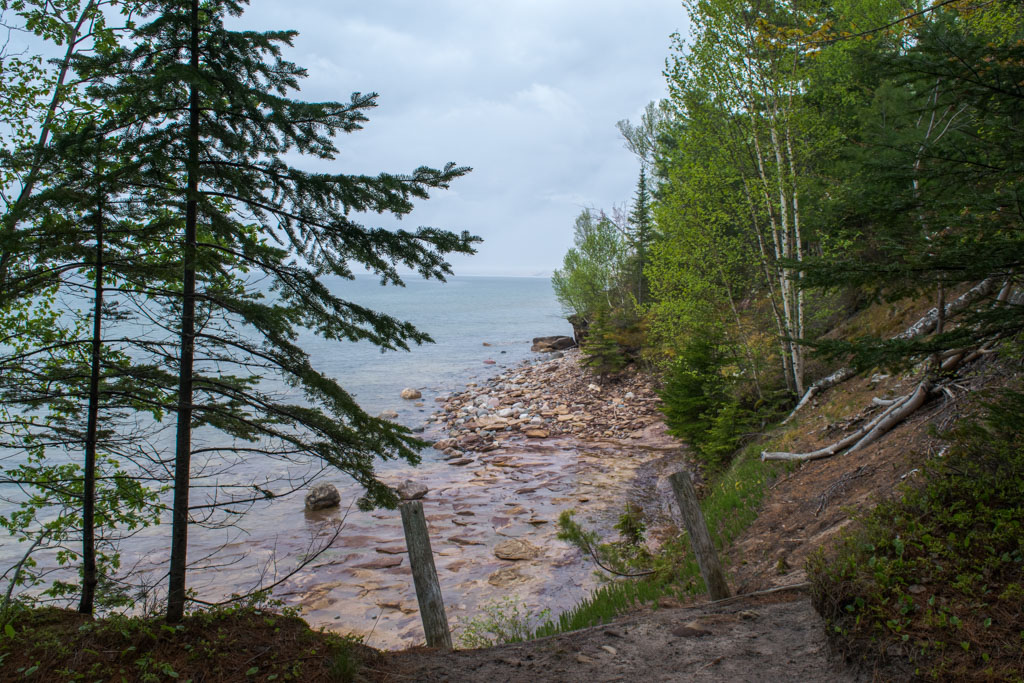
In truth, I’ve always kind of liked the rain in the forest. It feels right. The forest – if you leave it alone – will find its own balance and the rain is a vital part of that. I would have taken more photos that day, but it rained on us fairly steadily throughout the morning and afternoon. At points, especially as we moved further into the woods and away from the lake, the rain on the ferns and moss made it feel as if we were walking through a prehistoric forest. In early spring the forest floor wears shades of muted cedar and pale green and the dampness from the rain covers them in rich tones. When we were near the shore the rainfall really emphasized the power of the streams and creeks that empty into Lake Superior, causing them to swell enough that we just avoided the sandy beaches that day. The rocky beaches east of the lighthouse, however, were stunning.
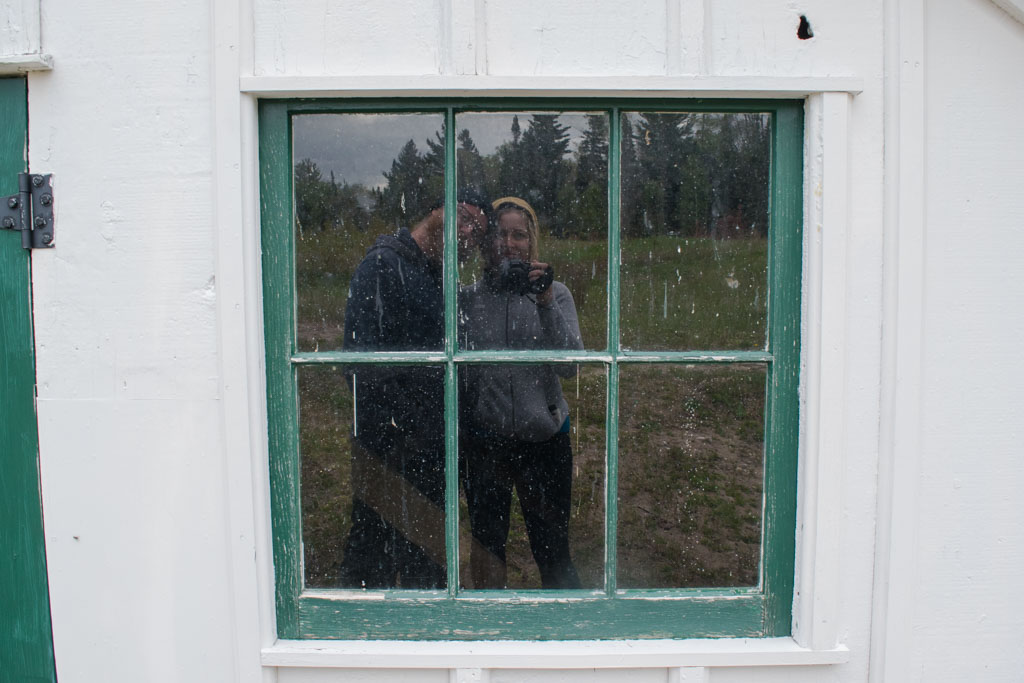
We lined our backpacks with contractor garbage bags and stuffed everything inside. They worked pretty well at keeping everything inside the backpack dry, but next time I would bring a waterproof cover for the exterior. I think not having to let everything dry out would really and truly be worth the added weight. After about 5 hours of trudging through the rain with the weight of our packs, and the occasional fits and starts to adjust it, we made it to Au Sable East. We also learned we can set up our entire tent in the rain in about 7 minutes if we really need to. We also both immediately napped for a few hours. You guys, backpacking in the rain is exhausting work.
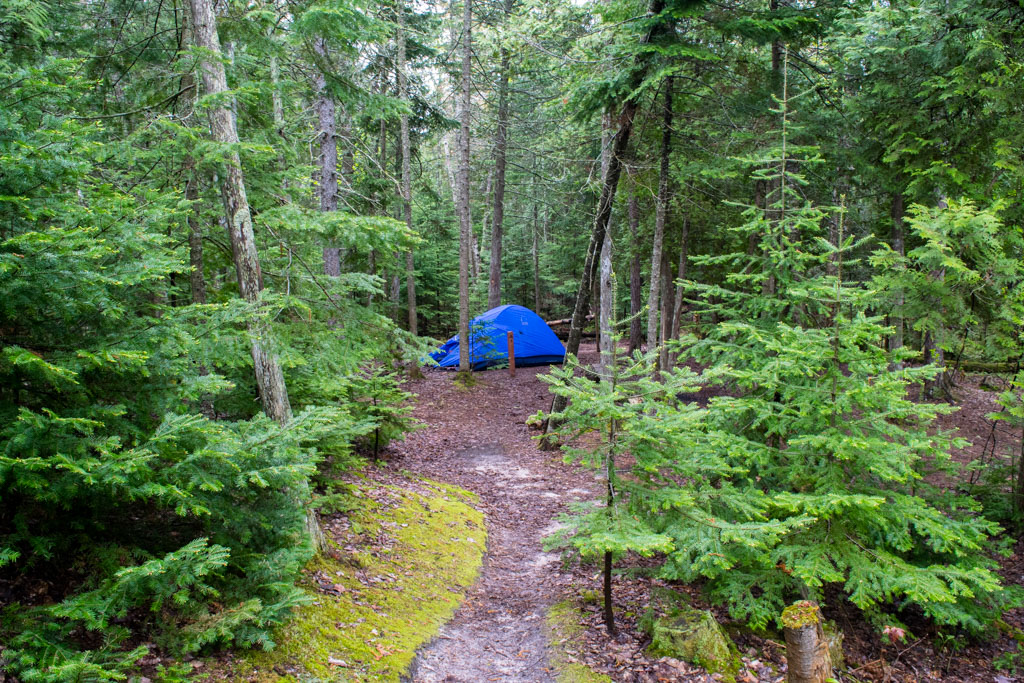
Au Sable East Campground is about a quarter mile east of the Au Sable Lighthouse. The lighthouse is still in active use because it overlooks Au Sable Point, which has since the 19th century been known as the “Shipwreck Coast.” The reef it overlooks extends about one mile into Lake Superior and at points is only about six feet deep with a floor of solid sandstone. As a result, the rocky coast to the east of the lighthouse is dotted with the clear evidence of shipwrecks. When we were there most of the big skeletons had washed away from the year before, but it wasn’t a long walk down the coast before you’ll step over worn down wooden planks or rusted bolts. In the “Wreck of the Edmund Fitzgerald“, Gordon Lightfoot sings “Lake Superior it’s said/ never gives up her dead” and this is true. Because of the great depth and extreme year-round cold temperatures of the lake, the bacteria that would usually cause a body to decompose (and either float to the surface or become a source of food for the underwater wildlife) can’t survive. The Edmund Fitzgerald sank in 1975 and its remains were found in the weeks following its sinking. In 1995 cameras were sent to survey the wreck and crew members were found. Their bodies were still visibly in tact and wearing life vests on the floor of Lake Superior. It speaks to the power of this lake. Since the 1800s, we’ve been doing our best to navigate or tame it. Lake Superior, however, does not care. It will claim you and it will keep you. It may spit up a piece of your ship onto Shipwreck Beach, but it keeps what it keeps. The water along the shoreline is beautiful, crisp and clear.
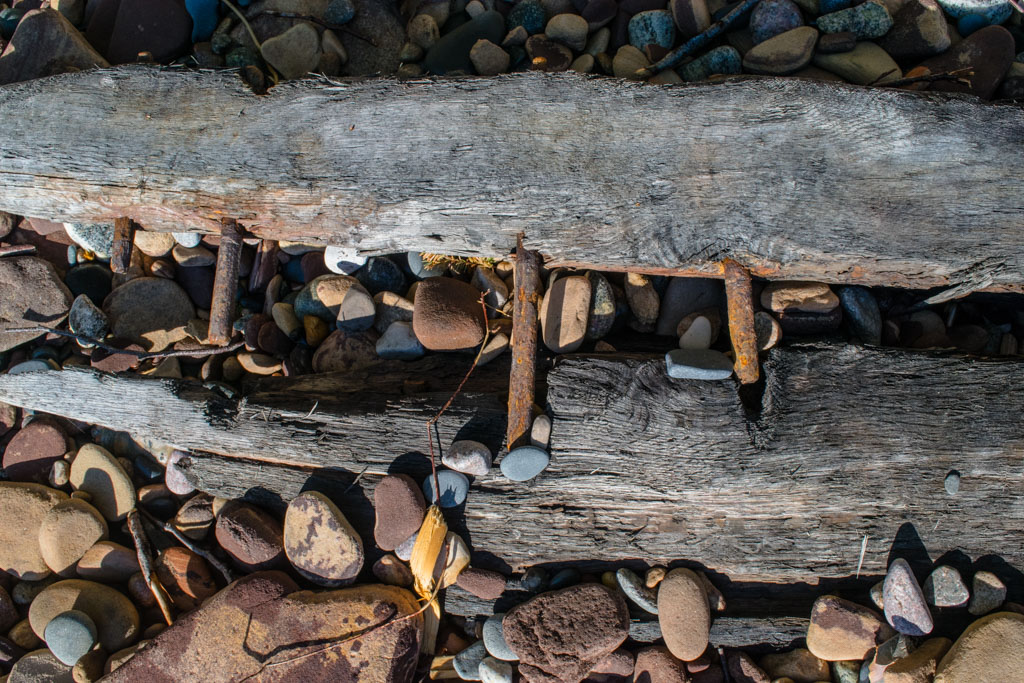
We woke still in the middle of the afternoon, but at this point the skies had largely cleared. It would remain largely overcast for the next few days, but at least the rain had stopped. The sun was out enough that we were able to put up a clothesline and hang stuff to dry. Dave’s stuff didn’t fare as well as mine, and we were basically working on drying his backpack and t-shirts for the next three days.
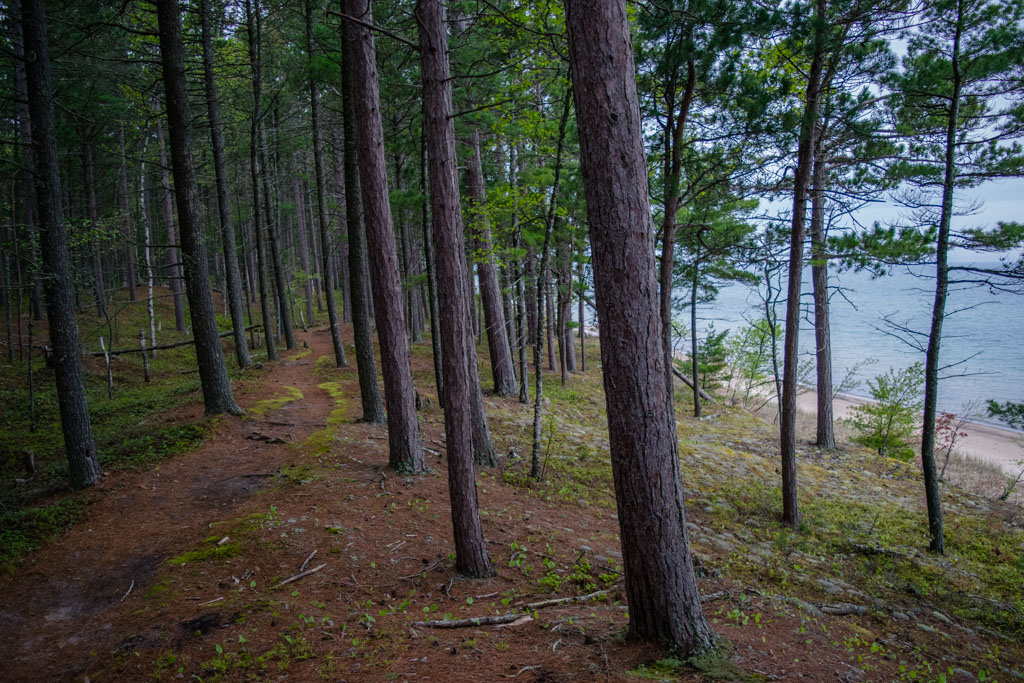
The Au Sable East campground is set about a quarter mile east of the lighthouse, and the path divides space between the group campsite and the individual campsite. We stayed in campsite 12 on the individual side. There are no individual fires allowed in Pictured Rocks but there is a group firepit for the whole camp to share. The night we stayed at Au Sable East there was only one other couple staying there but they, like us, seemed more interested in keeping to themselves. There was a small bench set to the side of the flat space where we put up our tent. If you were willing to walk to it there was a vault toilet, standing free among the pines, with no walls or doors around it. If you’re comfortable using it, it’s probably a very freeing experience.
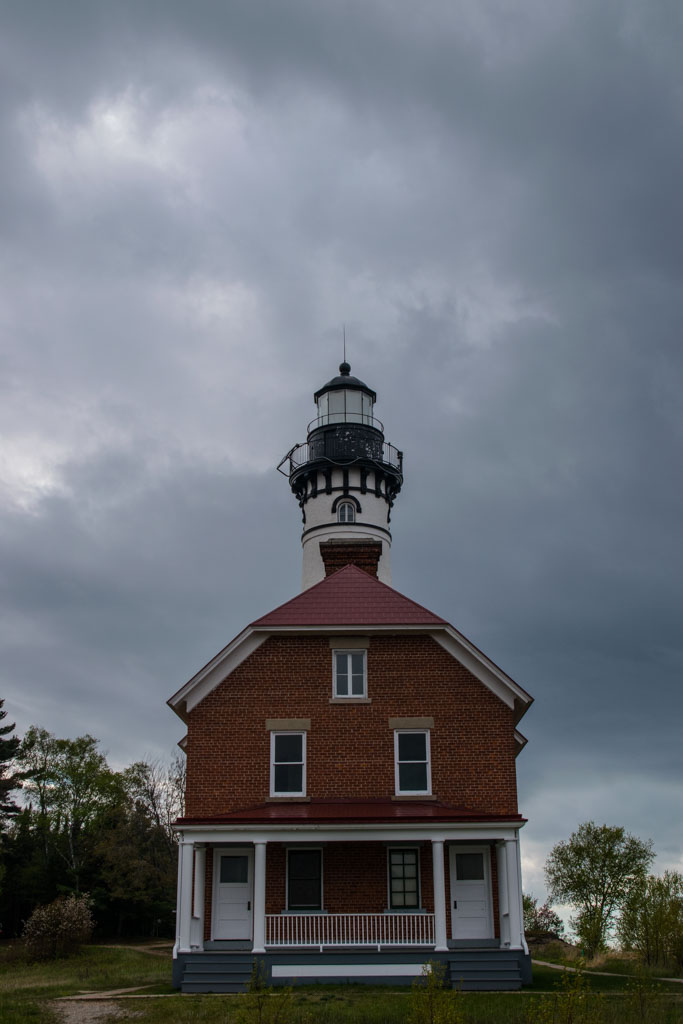
Post-nap, we took a walk back to the lighthouse. On our way through initially, we were both so tired of carrying heavy packs in the rain that we hadn’t taken the time to explore. Now, rested and refreshed, we wandered back in that direction, periodically picking up a rock and throwing it into the lake (one of life’s great joys.) The red and taupe sandstone that makes up the its floor contrasts with the verdant green of the new spring growth and the slate grey shades of the sky and the lake when it’s upset. Staring out from Au Sable Point, the rocky reef is very visible. It makes a great deal of sense why the early explorers needed a lighthouse here.
With no great view of the western sky from Au Sable East, we turned in early. We ate a can of baked beans for inner, which after an exhausting and long day were possibly some of the most transcendent baked beans I’ve ever tasted. I’ll wax philosophic about that another time, but there’s a good chance I was deep into the Forest Madness at this point. After dark, Dave read an H.G. Wells’ story aloud to me until I fell asleep. We may have both been deep into the Forest Madness.
We woke the next morning to blue skies and sunlight streaming through the trees. We lingered a little because it would give our stuff the best chance it had to dry out, and more rain was expected but not right away. The plan was to get back to the car before about noon, which would give us a few hours to putz around camp, walk the beach one more time, refresh our water supply and air out our damp stuff. It was only about 1.5 miles before we would reach the car, but the skies opened up on us once more before we made it. We never got the chance to really see the Log Slide, which is just as well because the lake reclaimed the overlook the winter before. We reached the Thunderbird in a downpour and it felt like crossing a finish line.
Pro tips:
Keep your car keys in a handy pocket so you don’t have to dig forever in the rain when you get to your car.
Keep a new set of fresh, dry clothes in the car so when you get back you can begin to feel like a new person quickly.
Find the water bottle you forgot you’d filled with extra delicious well water from two campsites ago.
Go to Camp Thunderbird Day 4: Grand Marais, St. Ignace and Cheboygan State Park
[googlemaps https://www.google.com/maps/d/u/0/embed?mid=1P0XG06hXW1-P5of2kUHGmY9TebA&w=640&h=480]
